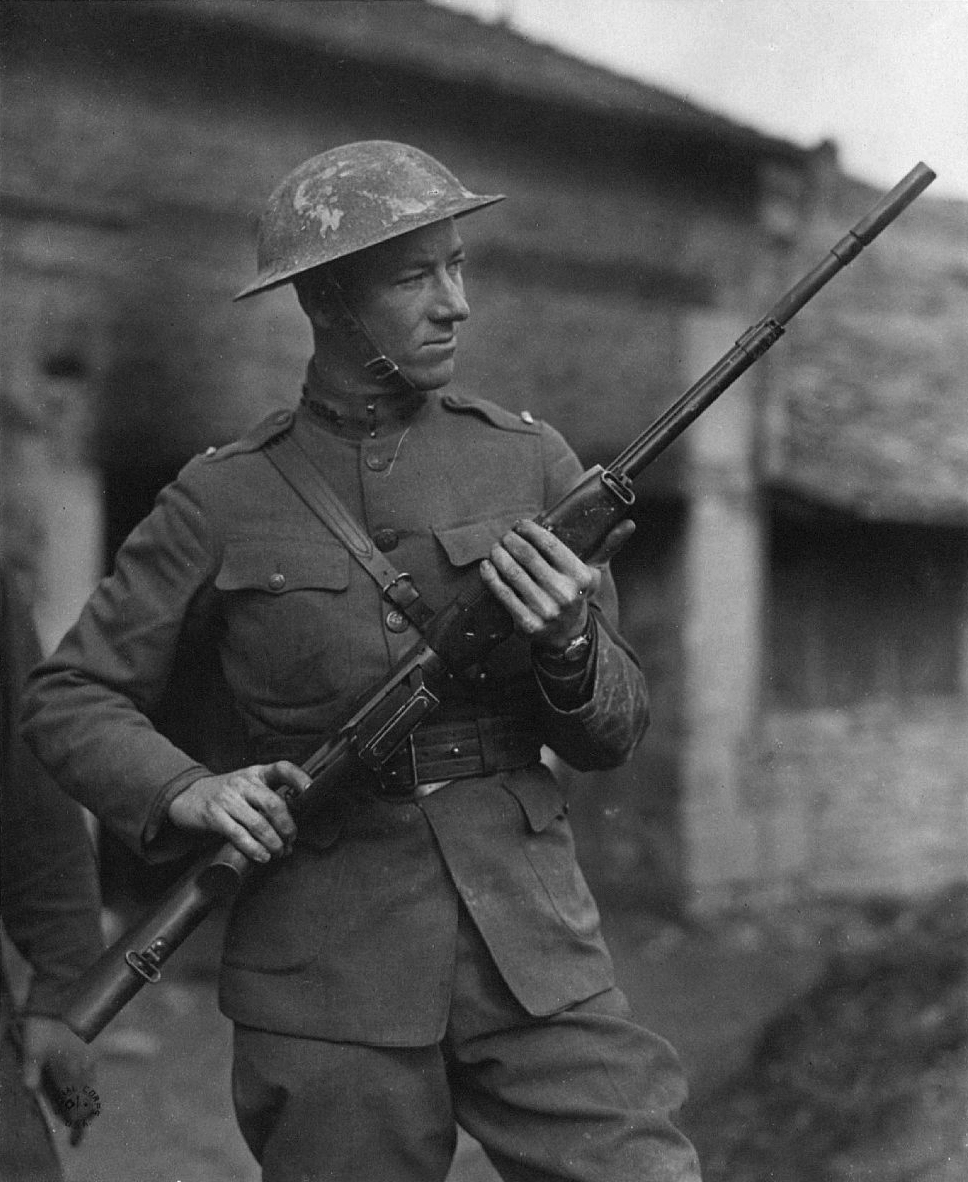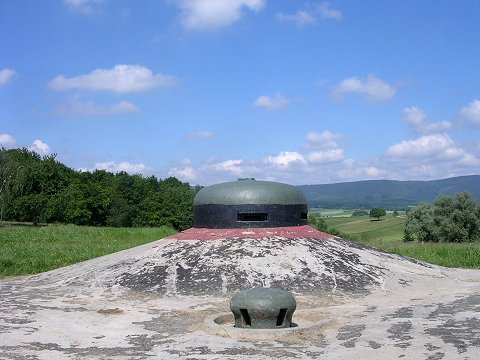|
GFM Cloche
The GFM cloche was one of the most common defensive armaments on the Maginot Line. A ''cloche'' (bell) was a fixed and non-retractable firing position made of a thick iron casting which shielded its occupant. By comparison, turrets could be rotated and sometimes lowered so that only the top shell was exposed. GFM is an acronym for ''Guetteur et Fusil-Mitrailleur'' (lookout and rifle-machine-gunner), which describes its purpose as a lookout and firing position for light weapons. Most of the bunkers or blocks in a Maginot Line ''ouvrage'' were fitted with several fixed armoured cupolas or cloches. The cupolas were designed to allow the soldiers to perform reconnaissance or repel an attack with an absolute maximum of cover, from inside the bunker. The armament of each cloche varied significantly, but were typically equipped with some combination of: * Light machine guns or automatic rifles * Vision blocks * Mounted binoculars * A periscope (located on the top of the bell) * A 50&nbs ... [...More Info...] [...Related Items...] OR: [Wikipedia] [Google] [Baidu] |
Maginot Line
The Maginot Line (french: Ligne Maginot, ), named after the Minister of the Armed Forces (France), French Minister of War André Maginot, is a line of concrete fortifications, obstacles and weapon installations built by French Third Republic, France in the 1930s to deter invasion by Nazi Germany, Germany and force them to move around the fortifications. The Maginot Line was impervious to most forms of attack. In consequence, the Germans invaded through the Low Countries in 1940, passing it to the north. The line, which was supposed to be fully extended further towards the west to avoid such an occurrence, was finally scaled back in response to demands from Belgium. Indeed, Belgium feared it would be sacrificed in the event of another German invasion. The line has since become a metaphor for expensive efforts that offer a false sense of security. Constructed on the French side of its borders with Kingdom of Italy, Italy, Switzerland, Nazi Germany, Germany, Luxembourg and Belgiu ... [...More Info...] [...Related Items...] OR: [Wikipedia] [Google] [Baidu] |
Cupolas
In architecture, a cupola () is a relatively small, most often dome-like, tall structure on top of a building. Often used to provide a lookout or to admit light and air, it usually crowns a larger roof or dome. The word derives, via Italian, from lower Latin ''cupula'' (classical Latin ''cupella''), (Latin ''cupa''), indicating a vault resembling an upside-down cup. Background The cupola evolved during the Renaissance from the older oculus. Being weatherproof, the cupola was better suited to the wetter climates of northern Europe. The chhatri, seen in Indian architecture, fits the definition of a cupola when it is used atop a larger structure. Cupolas often serve as a belfry, belvedere, or roof lantern above a main roof. In other cases they may crown a spire, tower, or turret. Barns often have cupolas for ventilation. Cupolas can also appear as small buildings in their own right. The square, dome-like segment of a North American railroad train caboose that contains the se ... [...More Info...] [...Related Items...] OR: [Wikipedia] [Google] [Baidu] |
Machine Gun
A machine gun is a fully automatic, rifled autoloading firearm designed for sustained direct fire with rifle cartridges. Other automatic firearms such as automatic shotguns and automatic rifles (including assault rifles and battle rifles) are typically designed more for firing short bursts rather than continuous firepower, and are not considered true machine guns. As a class of military kinetic projectile weapon, machine guns are designed to be mainly used as infantry support weapons and generally used when attached to a bipod or tripod, a fixed mount or a heavy weapons platform for stability against recoils. Many machine guns also use belt feeding and open bolt operation, features not normally found on other infantry firearms. Machine guns can be further categorized as light machine guns, medium machine guns, heavy machine guns, general purpose machine guns and squad automatic weapons. Similar automatic firearms of caliber or more are classified as autocannons, r ... [...More Info...] [...Related Items...] OR: [Wikipedia] [Google] [Baidu] |
Automatic Rifle
An automatic rifle is a type of autoloading rifle that is capable of fully automatic fire. Automatic rifles are generally select-fire weapons capable of firing in semi-automatic and automatic firing modes (some automatic rifles are capable of burst-fire as well). Automatic rifles are distinguished from semi-automatic rifles in their ability to fire more than one shot in succession once the trigger is pulled. Most automatic rifles are further subcategorized as battle rifles or assault rifles. History Mannlicher In 1885 Ferdinand Mannlicher made an experimental self-loader based on work begun in 1883 in both semi-automatic and fully automatic modes. It was an impractical failure due to fouling by its black powder ammunition, but it influenced later designs. Furthermore, Mannlicher produced smokeless powder automatic rifles from the early 1890s onwards until his death in 1904. Cei-Rigotti One of the world's first automatic rifles was the Italian Cei-Rigotti. Introduced in ... [...More Info...] [...Related Items...] OR: [Wikipedia] [Google] [Baidu] |
Periscope
A periscope is an instrument for observation over, around or through an object, obstacle or condition that prevents direct line-of-sight observation from an observer's current position. In its simplest form, it consists of an outer case with mirrors at each end set parallel to each other at a 45° angle. This form of periscope, with the addition of two simple lenses, served for observation purposes in the trenches during World War I. Military personnel also use periscopes in some gun turrets and in armoured vehicles. More complex periscopes using prisms or advanced fiber optics instead of mirrors and providing magnification operate on submarines and in various fields of science. The overall design of the classical submarine periscope is very simple: two telescopes pointed into each other. If the two telescopes have different individual magnification, the difference between them causes an overall magnification or reduction. Early examples Johannes Hevelius described an e ... [...More Info...] [...Related Items...] OR: [Wikipedia] [Google] [Baidu] |
VDP Cloche
The VDP cloche was an element of the Maginot Line fortifications. A ''cloche'' (bell) was a fixed and non-retractable firing position made of a thick iron casting which shielded its occupant. By comparison, turrets could be rotated and sometimes lowered so that only the top shell was exposed. VDP cloches were used for observation of the surrounding area for artillery direction. VDP is an acronym for ''Vision Directe et Périscopique''. By comparison with the GFM cloche, the VDP cloche had narrower ports and was consequently lower in profile. Description VDP cloches were equipped with three embrasures or crenels for direct vision, providing protection to observers. VDP cloches were also equipped with periscopes that allowed a greater arc of view. The cloches were embedded in a thick concrete carapace over a combat, entrance or observation block element of a largely subterranean Maginot fortification. A platform, identical to that used in the GFM cloche, was installed for the obser ... [...More Info...] [...Related Items...] OR: [Wikipedia] [Google] [Baidu] |
JM Cloche
The JM cloche is an element of the Maginot Line. It is a non-retractable non-rotating cupola of steel alloy like GFM cloches, but are armed with twin heavy machine guns, as opposed to the lighter automatic rifles associated with the GFM. There are 179 JM cloches on the Maginot Line. JM is an acronym for ''Jumelage de Mitrailleuses'' (twin machine guns). While the MAC 31 heavy machine guns were of the same caliber (7.5mm) as those in GFM cloches, they had a longer practical range and a maximum range of , with a 500 round per minute rate of fire.Mary, Tome 2, page 109 Description The JM cloche closely resembles the GFM cloche in size and construction. It exists in three versions, all designed Model 1930: small, large and two-man. JM cloches had a single firing port A firing port, sometimes called a pistol port, is a small opening in armored vehicles, fortified structures like bunkers, or other armored equipment that allows small arms to be safely fired out of the vehicle a ... [...More Info...] [...Related Items...] OR: [Wikipedia] [Google] [Baidu] |
LG Cloche
The LG cloche was a defensive element common to many Maginot Line ''ouvrages''. The fixed cupola was deeply embedded into the concrete on top of a combat block, with only the top surface visible. The opening permitted the ejection of grenades from the interior of the cloche, providing a means of close defense against enemy troops on top of the bunker. 75 units were installed in the Maginot Line. LG refers to ''Lance-Grenade'' (grenade launcher). Unlike other cloches such as the GFM or the JM, the LG cloche was effectively "blind", possessing a single shuttered orifice in diameter in its flat crown. It had no observation ports at all, as it did not project appreciably above the surrounding surface. The LG cloche came in three models: a small version, high, a large version, and a cloche for two persons, tall. All were in diameter. LG cloches were usually found in the vicinity of an entrance block. The LG cloche was armed with a grenade launcher that could fire at an angle f ... [...More Info...] [...Related Items...] OR: [Wikipedia] [Google] [Baidu] |
Fort Schoenenbourg Entree Hommes Detail Tourelle
A fortification is a military construction or building designed for the defense of territories in warfare, and is also used to establish rule in a region during peacetime. The term is derived from Latin ''fortis'' ("strong") and ''facere'' ("to make"). From very early history to modern times, defensive walls have often been necessary for cities to survive in an ever-changing world of invasion and conquest. Some settlements in the Indus Valley civilization were the first small cities to be fortified. In ancient Greece, large stone walls had been built in Mycenaean Greece, such as the ancient site of Mycenae (famous for the huge stone blocks of its 'cyclopean' walls). A Greek '' phrourion'' was a fortified collection of buildings used as a military garrison, and is the equivalent of the Roman castellum or English fortress. These constructions mainly served the purpose of a watch tower, to guard certain roads, passes, and borders. Though smaller than a real fortress, t ... [...More Info...] [...Related Items...] OR: [Wikipedia] [Google] [Baidu] |





